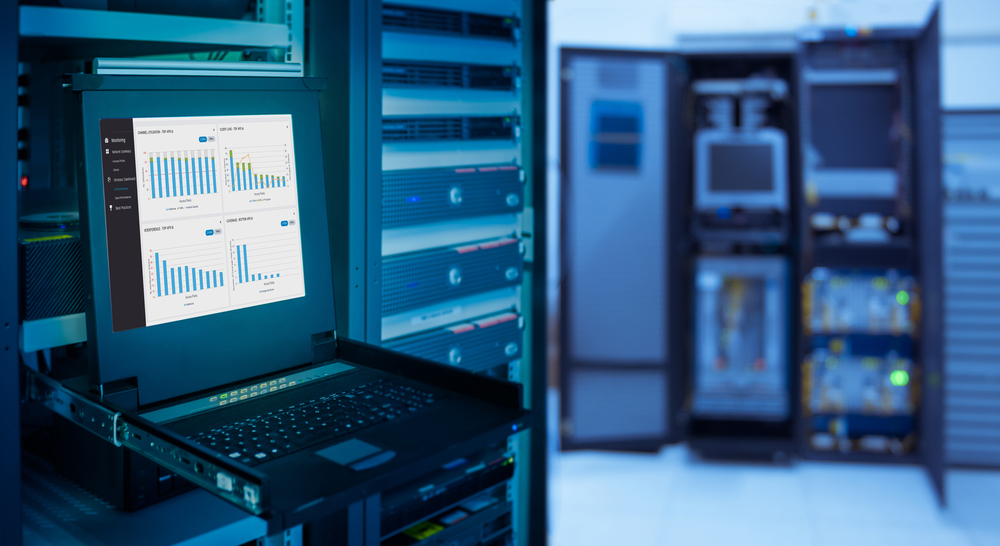The Raritan Blog
Home » Raritan Blog » KVM Switches & BIOS-Level Access - Why is it so Important?
KVM Switches & BIOS-Level Access - Why is it so Important?
Jessica Ciesla
December 1, 2020

It is often said that KVM switches provide “BIOS-Level Access” and this is a big advantage of KVM Switches over other forms of remote management. But what does this actually mean and why is it so important? How do KVM Switches provide this and why is it important? This blog introduces these topics. A future blog will cover more advanced features and topics.
What is the BIOS?
BIOS stands for the Basic Input/Output System of a PC, server or workstation. Wikipedia defines it as: “firmware used to perform hardware initialization during the booting process and to provide runtime services for operating systems and programs.” The BIOS also is used to configure the computer hardware/devices, define the boot devices and sequence, and to run diagnostics. Most regular users may never use the BIOS, but it is very important for system administrators and lab managers to configure and re-configure computers. UEFI (Unified Extensible Firmware Interface) is a more modern version of the BIOS, which this blog also applies to.
How do you Access/use the BIOS?
To enter the BIOS, you need hit a specific key on the keyboard as the computer is starting (booting) up. This can be the Delete, Esc, F1, F2, F12 or other keys. The specific key and when you press varies by computer. For my Dell XPS 8900 PC, the F2 and F12 function keys are used and you click them when you see the Dell logo come up. The BIOS screen is then displayed on my screen and I can interact with it with to change settings, run diagnostics and other functions. Once I exit the BIOS, then the Windows 10 Operating Systems loads as usual.
How does a KVM Switch Access the BIOS when other Remote Management Cannot?
Many popular remote management tools such as RDP, VNC and SSH cannot access the BIOS. Why is that? It is because they run at the Operating System level, for example, they require the Windows or Linux Operating Systems to be already loaded. They also require standard networking to be operational. Neither of these are present when the BIOS is active.
KVM Switches are directly connected to the physical Keyboard, Video and Mouse (KVM) ports via cables or server dongles, so they can interact with the computer hardware at both the BIOS and OS levels. KVM Switches don’t require the Operating System to be running or the computer’s networking ports to be operational. Unlike remote management tools, the KVM Session continues as the computer transitions from BIOS to OS and back.
How to Use the BIOS in a KVM Session
To access the BIOS during a KVM session, first launch a KVM Session. Then use it to restart the computer and then hit the BIOS entry key (i.e. F2, F12) at the appropriate time. The OS will shut down, the BIOS will appear and then you can interact with it via the keyboard and/or mouse. Older BIOS may only work with the keyboard. Newer BIOS support mouse and keyboard. My own Dell PC has two different sets of BIOS screens. One only works with the keyboard; the other uses both mouse and keyboard.
Future Blog - Advanced Features
A future blog will cover more advanced features including virtual media usage in the BIOS, special KVM features that we have implemented over the years to support BIOS access and BIOS changes that are necessary sometime to support remote management and BIOS usage by KVM switches.
Other Blog Posts
- The Rapid Growth of AI and the Use of Raritan PDUs to Meet Higher Power Demands
- Posted on October 11, 2023
- Data Center Report Fewer Outages, But Downtime Still Costly
- Posted on September 20, 2023
- Survey: Energy Usage and Staffing Shortages Challenge Data Centers
- Posted on September 20, 2023
- Raritan Secure Switch: Secure NIAP 4.0 Compliant Desktop KVM
- Posted on September 20, 2023
- The Midwest is a Hot Market for Data Centers: How the New Generation of Intelligent Rack PDUs Can Save Cloud Giants Uptime and Money
- Posted on September 7, 2023
Subscribe
Upcoming Events
- AFCOM Data Center World
- April 15 – 18 • Walter E Washington Convention Center - Washington, DC
- Advancing Data Center Construction West 2024
- May 6 – 8 • Salt Lake City, UT
- Net Zero Data Center
- May 16 – 17 • Dallas, TX
- 7x24 Exchange Spring
- June 9th • JW Marriott Orlando Grande Lakes
Latest Raritan News
- Legrand Certifications and Process Controls Provide Confidence in Information Security for Network-Connected Devices in Data-Related Applications
- Posted on April 1, 2024
- Legrand Releases Version 4.0 of Raritan’s Industry-Leading Secure KVM Switches, Raising Bar for Secure Desktop Access
- Posted on July 31, 2023
- Legrand Revitalizes Data Center Sector with Two Revolutionary Intelligent Rack PDUs
- Posted on May 1, 2023
- Raritan Reveals The MasterConsole® Digital Dual KVM Switch
- Posted on February 18, 2021
- Legrand Data, Power and Control Division Announced as Finalist in Six Categories at DCS Awards 2020
- Posted on November 9, 2020